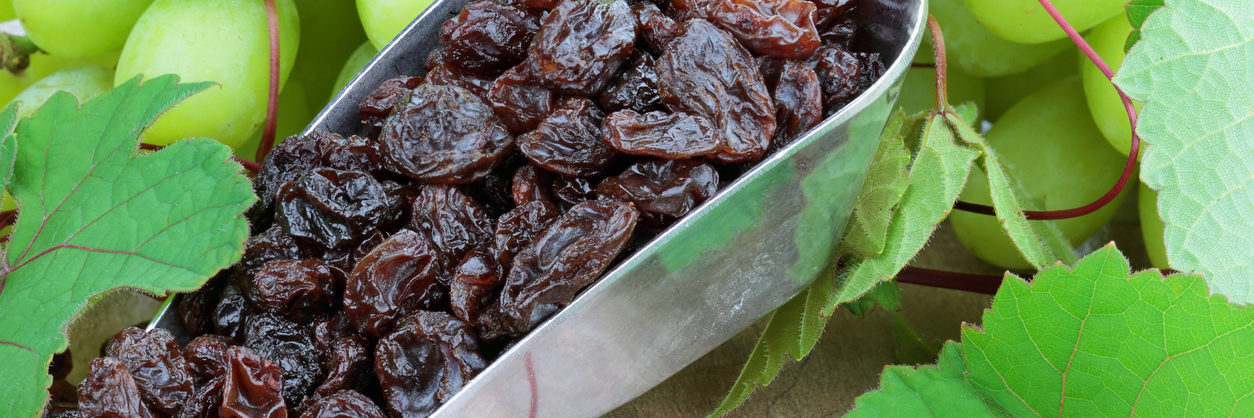
About The Buzz: Raisins Significantly Reduce the Risk of Diabetes and Cardiovascular Disease?
TheBUZZ
Raisins significantly reduce the risk of diabetes and cardiovascular disease?
WHAT THEY’RE SAYING
Eating raisins is protective against a host of negative health outcomes including diabetes, cardiovascular disease, and obesity.
WHAT WE KNOW
Made by sun drying seedless grapes, raisins are incredible nutritional powerhouses, packed with health-promoting nutrients. In addition to providing a natural source of potassium, magnesium, and an array of antioxidants, raisins contain no fat, saturated fat, or cholesterol. Raisins also provide a lot of bang for their buck in terms of fiber: a single 1-oz serving contains 3 grams of fiber for only 90 calories, earning this dried fruit the “excellent source of dietary fiber” rating.* They retain the minerals and most of the phytochemicals and antioxidants of the grape.
WHY IT MATTERS
Research has consistently shown that more fiber equals greater health outcomes. For example, five (5) studies found that individuals who have the highest levels of fruit or fruit fiber have a distinctly lower risk of coronary heart disease than those who ate the smallest amount of fiber. The same holds true for stroke, blood pressure and cholesterol. In fact, raisins even have the potential to lower blood pressure. Antioxidants promote heart health, and raisins rank in the upper quartile of antioxidant activity.
Aside from enhancing heart health, raisins have a positive effect on reducing the risk of diabetes and improving blood sugar control of those with diabetes. Glycemic index (GI) is a rating scale used to determine how any particular food impacts a person’s blood sugar. Highly processed foods, such as white bread , have a high GI. Foods like vegetables, fruits, and whole wheat-based products have a lower GI and do not dramatically raise blood sugar levels. Glycemic control is improved when individuals increase their fiber intake. There are several effective ways to help reduce the risk of diabetes: preplacing high GI foods with high-fiber foods with a low GI, decreasing dietary fat intake, and increasing intake of protective antioxidants and phytochemicals (antioxidants). Raisins make the cut!
OUR ADVICE
Studies have found that raisins also enhance satiety, decrease appetite, and offer an effective way to incorporate a fiber-rich, antioxidant-packed food into your diet. You can ensure you’re getting enough fiber by making sure half your plate is composed of fruits and vegetables. Many people may avoid eating raisins because they fear the sugar content of dried fruit has a negative impact on blood sugar or can cause cavities because of their stickiness, but research has consistently contradicted these false claims. It’s simple: eat raisins!
6 Ways to Add Raisins to Your Diet
- Check out our 10 Ways to Enjoy Raisins.
- Toss raisins into a salad.
- Add raisins into oatmeal or overnight oats.
- Add a serving of raisins to your favorite granola.
- Sprinkle raisins into cereal.
- Eat raisins as a go-to snack.
*Anderson J.W., A.R. Waters (2013).” Raisin Consumption by humans: Effects on glycemia and insulinemia and cardiovascular risk factors.” Journal of Food Science, 78(1), 11-17. View Abstract


